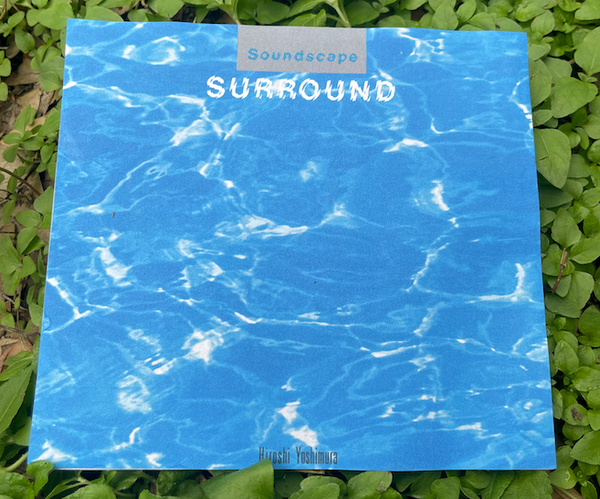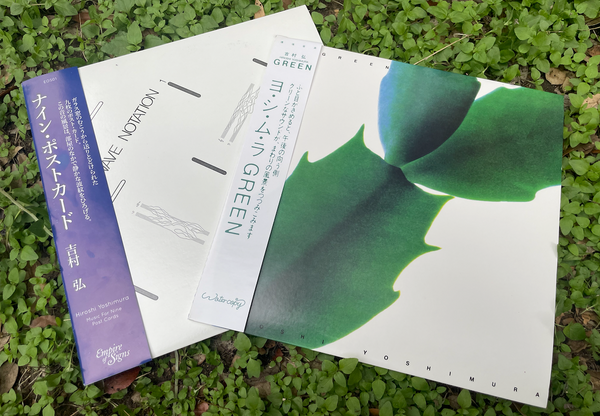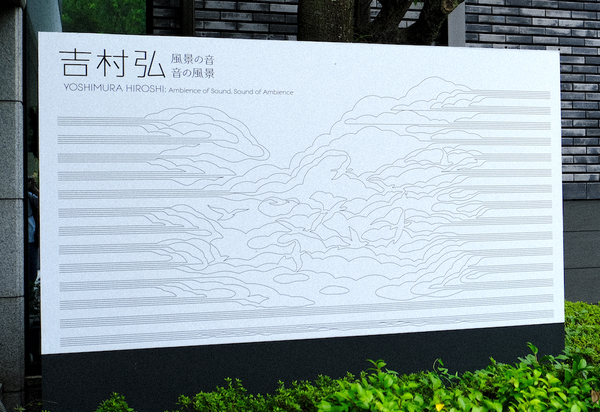The Genius of Hiroshi Yoshimura

In celebration of the re-release of Hiroshi Yoshimura's 1986 masterwork Surround, which is being reissued by the record label Temporal Drift, we sat down with Patrick & Yosuke from the label to chat all things Yoshimura.
Light in the Attic: Congrats on the re-release of Surround. As an undeniable masterpiece (in a catalog full to the brim with so many masterpieces), Surround is like nothing else before or since. What is it about Hiroshi's music that speaks to you? Why do you think his art means the world to so many of us?
Patrick McCarthy (Temporal Drift): It can be difficult to pinpoint what exactly it is about Hiroshi's music that I find so compelling. It could be how his music often lives in a space that can be both foreground and background while being completely engaging in both respects. Hiroshi's melodic choices are also so gentle and memorable, they feel like they have always existed. Perhaps others connect to his music for similar reasons. but surely his wide appeal is undeniable.
Yosuke Kitazawa (Temporal Drift): I think Hiroshi has a way with melodies that makes him unique among musicians who work within the context of ambient or environmental music. He can draw you in not only through beautiful soundscapes and abstract textures, but also with familiar melodies that simultaneously sound effortless and carefully composed. There’s something very personal about his music, yet he makes each composition sound like he made it just for you.

LITA: What's the story of how Hiroshi met home builder Misawa Homes and ended up working together as part of their Soundscape series, which of course included the Surround album?
YK: This was the mid-1980s in the so-called bubble era, and Misawa Homes was interested in the idea of incorporating “amenities” into their business. For them, this meant adding something that would enhance the living spaces they were creating. Hiroyoshi Shiokawa was an employee there at the time, assigned to their Sound Design Office and tasked with coming up with what that could be. He had met Hiroshi Yoshimura a few years prior, and was intrigued by his approach to environmental music and the concept of “soundscapes.” He envisioned that this “amenity” would be an album of environmental music, and that Hiroshi would be the perfect person for the job. Surround was the result, and the rest is history. Shiokawa recounts the backstory of the album in more detail in his newly written liner notes for this reissue.
LITA: In the packaging for the release, you've included a beautiful quote from Hiroshi about the album:
“If Surround can be listened to as music that’s as close to air itself, allowing us to enter each listener’s sound scenery, or as something that exists within a new perspective, expanding the middle ground between sound and music, and transforming it into a comfortable space, it would be much appreciated.”
What was Hiroshi's inspiration for creating music with a specific space in mind?
YK: That quote is an excerpt from his original liner notes for Surround. The notes also refer to an essay he wrote that was originally included in the program for a Harold Budd concert, which provides a glimpse into his approach to music:
"By enveloping a space with sound, it transforms into something prosperous. We can call it an interior made up of sound. Not all interiors are visual by nature; music as interior is none other than the interior of the heart."
Hiroshi was also a great visual artist, and it seems that he approached interior and exterior spaces as blank canvases, or blank sheets of music on which he would draw and visualize his compositions. This quote, from the 1999 CD edition of Music For Nine Post Cards sums it up pretty well:
"Images of the movement of clouds, the shade of a tree in summer time, the sound of rain, the snow in a town, with those rather quiet sound images, I sought to add the tone of ink painting to the pieces."

LITA: Tell us about the recent exhibit, Hiroshi Yoshimura: Ambience of Sound, Sound of Ambience, which happened earlier this year at the Museum of Modern Art in Kamakura, Japan. What was it like? When is the world tour?
PM: It was incredible to visit the exhibit in Kamakura. I never thought I would be able to see so many of Hiroshi's works in person. The entire museum was vibrating with his presence, with elements of his graphic scores applied as decals to the museum's exterior windows and his music quietly playing throughout the spaces. There were visual and sound sculptures, including some of his sound tubes, which visitors could interact with. It was really special to finally see some of Hiroshi's video art and to see large-scale prints of his incredible graphic scores. We would of course love for fans outside of Japan to have an opportunity to see the exhibit. Hopefully, this will happen soon!
YK: The exhibit showed that Hiroshi was not only a pioneering musician, but an amazing visual and conceptual artist as well. I thought I had a good amount of knowledge about Hiroshi’s works, but it was truly eye- and ear-opening to see the vast body of work, from compositions he wrote as a high school student, to giant metal sculptural pieces that can be played as an instrument. He liked to drink beer, and he would take the empty cans and create instruments out of them. While we were walking through the exhibit, we suddenly heard the sound of heavy rain hitting the roof of the building. We weren’t sure if it was pre-recorded sounds being played back, or perhaps it was nature being played as an instrument. In a way that was the moment when Hiroshi’s presence was felt the most.

LITA: Can you share any news on future Hiroshi releases?
YK: Hopefully someday all of Hiroshi’s music will be readily available to everyone in the entire world.
>>>>>>>>>>>>>>
Dig in and explore the catalog of Temporal Drift
Follow TD's happenings on Instagram






